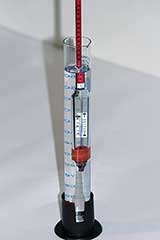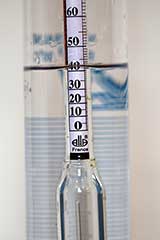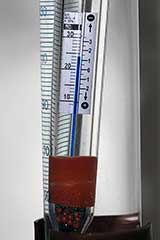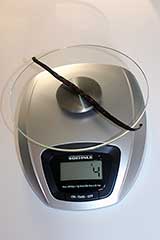Meats and Sausages
Alcohol Tester
Alcohol tester is useful for double checking calculations and is a must have tool for determining the strength of a new or unknown distillate.Strong alcohol can be diluted with water to any strength by consulting alcohol tables or using basic calculations. It must be noted that alcohol volume increases with temperature. It is estimated that the volume of 1 liter of vodka increases by 1 ml with each 1° C increase in temperature. If we increase the temperature of 10 liters of vodka by 5° C its volume will increase by 50 ml, so we will have the new volume of 10,050 ml. Alcohol testers are calibrated to give correct readings at 20° C. To compensate for alcohol volume changes with temperature a good alcohol tester has a built in thermometer with a correction factor. A reading is taken, and if the temperature is different than 20° C, the thermometer indicates how we should adjust the reading. Keep in mind that the tester is designed for solutions of alcohol and water only. It does not work when sugar, juices or infusions are added to the alcohol solution.
Scale
A general purpose digital scale is acceptable as long as it is accurate to within 1 gram. When heavy sugar syrup (73%) is made about 0.7 - 0.8 g of citric acid is added to 1 kg of sugar. To measure such a small amount a highly accurate scale is needed or a solution of citric acid and water is made.





















